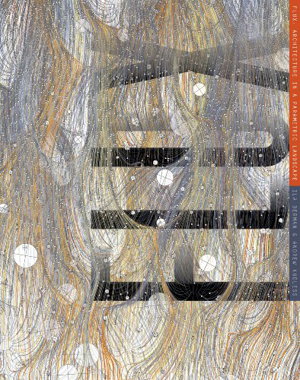| Wed | 9am – 5:30pm |
| Thu | closed |
| Fri | 9am – 5:30pm |
| Sat | 10am – 5pm |
| Sun | 12pm – 4pm |
| Mon | 9am – 5:30pm |
| Tue | 9am – 5:30pm |
Ask our staff anything about our shop or products, or share your feedback.

PublishedApplied Research & Design, October 2017 |
ISBN9781940743004 |
FormatHardcover, 320 pages |
Dimensions29.2cm × 22.8cm |
FLUX: Architecture in a Parametric Landscape focuses on the emerging field of advanced digital design. In the last two decades of architectural practice, new digital technologies have evolved from being simply representational tools invested in the depiction of existing models of architectural space to becoming significant performative machines that have transformed the ways in which we both conceive and configure space and material.
These tools for design, simulation, and fabrication, have enabled the emergence of new digital diagrams and parametric landscapes--often emulating genetic and iterative dynamic evolutionary processes--that are not only radically changing the ways in which we integrate disparate types of information into the design process, but are also significantly altering the methodological strategies that we use for design, fabrication and construction. That our current models of space are far more continuous, variant and complex, is specifically a result of the tools we are using to produce them, an inevitable byproduct of the ever-expanding capacities of digital computation and related fabrication technologies as these intersect with theoretical trajectories that long ago dismantled the social, functional and technological truths of the early part of the 20th century. After the early digital explosion of the 1990's, new forms of rigor and production have entered into the field of architecture, supporting the emergence of parametric and building information modeling and the enhanced use of computational geometry and scripting that together represent the second critical wave of digital design practices. No longer importing and (mis)using the tools of other disciplines, architects have begun to develop their own suite of sophisticated tools and processes in the pursuit of an architecture that is integrated across the disciplines as well as formally and performatively complex. This shift can be seen in the very make up of leading design firms and institutions around the world. Large international architecture and engineering firms now have internal research groups such as the Specialist Modeling Group (Foster and Partners) and the Advanced Geometry Unit (Arup) that have developed and realized some of the world's most geometrically complex and architecturally sophisticated projects using parametric modeling and procedural techniques such as those used in the Swiss Re Tower in London (Foster and Partners) and the Beijing Olympic Stadium (Arup/Herzog & de Meuron). At the other end of this spectrum are smaller experimental firms such as MOS, Matsys, Gramazio & Kohler, and theverymany, that have exponentially extended the terrain of parametric practices primarily through architectural research, installations and smaller-scaled architectural projects. The undulating structure of the FLUX installation itself--the armature supporting the exhibition out of which this publication evolved--exemplifies the potential of parametric modeling in its design. From the thickness of the ribs to the overall twisting geometry and perforated skins, the spatial form is controlled through a complex set of relationships defined by its formal, programmatic, structural and fabrication constraints. FLUX brings to the forefront this range of contemporary projects that are currently changing the landscape of architecture through the integration of parametric processes and computational geometry. The content of this book is organized through a series of thematic categories: Stacked Aggregates, Modular Assemblages, Pixelated Fields, Cellular Clusters, Serial Iterations, Woven Meshes, Catenary Systems, and Networked Logics. Each of these taxonomies explores a set of spatial logics that have been transformed through advanced digital practices. Throughout the book these themes are elaborated through the presentation of 63 built works and experimental architectural projects, which are then expanded through analytical and generative diagrams and models developed for this publication that further the design potential of the parametric logics used to create them.

